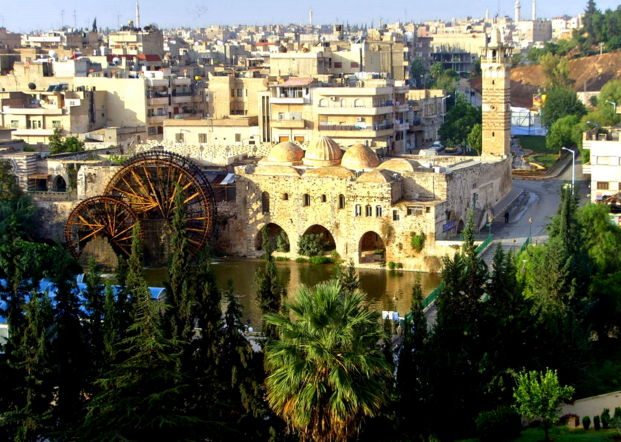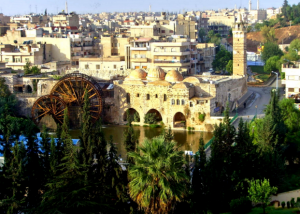Ashes of Hama by Raphael Lefevre provides a chronological description of the progression of the Syrian Ikhwan (Muslim Brotherhood). The book discusses the establishment of the Brotherhood and its evolution in Syrian politics. Lefevre does a fascinating job analyzing the Muslim Brotherhood institutionally and organizationally, provoking the reader to move beyond stereotypes about the Syrian Muslim Brotherhood. This book explains the historical context that helped fuel the violence and vengeance of the current Syrian crisis.
After Hafiz Al-Assad’s rise to power – “by the 1970s, large sections of Syrian society had become alienated by the regime’s policies in virtually every aspect of life. The Syrian Ba’ath’s pro-rural bias, its socialist policies, a growing sense that some regions were privileged over others, its sectarian makeup and, last but not least, a feeling that the ideology put forward by regime officials had not only been unsuccessful in mobilizing the masses but had in fact utterly failed – all these were elements fuelling strong popular resentment”. With the country in total control by the minority Alawite sect of Shia Islam, the majority Sunni Muslims were marginalized in all spheres, including religious teachings, by the regime. This was the Alawite’s revenge for their pre-colonial marginalization by the Sunni majority. The author’s depiction of these events is fundamental in assessing how conflicts can reoccur.
The repression of Sunnis provided the Brotherhood with a platform to spread their ideology and motivate the masses. By the end of the 1970s, civil unrest had spread throughout the country. Aleppo and Hama were the two primary hubs for uprisings against the Ba’athist regime. While Assad focused on rural minorities, prioritizing the sectarian Arab unity message and repressing religious dominance, the Sunni majority grew to identify more strongly with the Brotherhood. This allowed the Brotherhood to mobilize people and organize protests that, “lasted for several months before reaching a peak in March 1980”. When the violence broke out in 1982, the regime was quick to frame the uprisings in sectarian terms. This directly correlates to how the same regime, 20 years later, framed the 2011 revolution. This is a tactic used by the Ba’athist government to discredit the protesters and justify their use of power to attack disproportionately. The government established a narrative that these protestors were “terrorists” that don’t belong in Syria and need to be exterminated. This is what we saw in 2011 when the government used force against peaceful protesters. When the Brotherhood reappeared during the current uprisings, “Bashar al-Assad labeled the Syrian branch of the Muslim Brotherhood an extremist ‘terror group’”, using language similar to his father’s.
The events that led to the 1982 massacre in Hama have many parallels to the 2011 revolution. The author quotes former Vice President of Syria, Abdel Halim Khaddam, saying, “the regime made a mistake by increasing the repression after the Aleppo Artillery incident [of June 1979], as it only further radicalized many Brothers who came to feel they had no option but to use violence”. The power asymmetry exhibited by the government further radicalized the marginalized population. This reoccurred during the most recent uprisings – people turned to violence after facing severe oppression, which reignited the jihadist trend throughout Syria in the hopes of toppling the regime. There have been very few incidents where the Syrian regime has directly launched attacks on ISIS and vice versa. It seems that the two extremist groups target the moderate population, giving people no choice except to align with either extreme. According to this observation, it should come as no surprise that the moderate Muslim Brotherhood decided to align itself with the extremists that are supposed to be fighting the regime. In February 1982, the Brotherhood and the Fighting Vanguard called for the entire city of Hama to rise up and revolt against the Ba’athist regime. Hamawites, a faction within the Brotherhood, took up arms that were distributed by the radical group and slaughtered a dozen government officials, sparking violent riots. Again, there is immense similarity with what is currently going on in Syria. Extremist government opposition groups are spreading the same messages and using religion as a motivation to kill Alawites and government supporters. After the 1982 events, the Syrian Brotherhood lost their legitimacy and power. They became further marginalized and targeted by the government and they also lost the support of most of their constituencies. Many members either had to flee into exile or face torture and death by the regime.
Today’s conflict has provided the Brotherhood the opportunity to participate again in Syria. After 30 years in exile, the Brotherhood has been a growing force of support for the “moderate” Islamic rebel groups. The same political environment has recurred where moderates are forced to side with an extremist group. The Brotherhood has united the moderate groups under the umbrella of the “Shields” organization and supplies them with financial support. Their leaders are more cautious this time because, “after all, it was the organization’s own involvement in armed struggle against the regime thirty years ago that led to major internal splits, the weakening of the group, and its eventual exile”.
Ashes of Hama is an important book that provides tremendous insight on how events are shaped in Syria. Raphael Lefevre provokes the reader to view the current situation in the country through the lens of its past. The last chapter begins with quotes that erupted in 2011, “We will not let the massacres of 1982 be repeated!” shouted protesters. “Hafiz died and Hama didn’t. Bashar will die and Hama won’t,” they continued. The regime crackdown on Hama in 1982 was not forgotten. On the contrary, it helped to fuel the uprising in March 2011. The same social, economic, political, and religious conditions that existed in Syria under Hafiz Al-Assad still exists three decades later under his son, the uprisings were motivated by similar grievances experienced in the 1980s. This book contextualizes and explains underlying causes of the current crisis. Understanding the Muslim Brotherhood’s relationship with the regime helps us understand the current situation. Syria can easily be misdiagnosed as a conflict fueled by religion and sectarian differences, but if closely examined through a religious lens, it is clear that religion is a malleable component of the conflict that is manipulated by either side to advance their agenda and propaganda.
Works Cited:
Lefevre, Raphael. Ashes of Hama: The Muslim Brotherhood in Syria. New York, New York: Oxford University Press, 2013. 43.
El Yassir, Ali, and Raphael Lefevre. “Militias for the Syrian Muslim Brotherhood?” Carnegie Endowment for International Peace. October 29, 2013. Accessed April 28, 2015.


